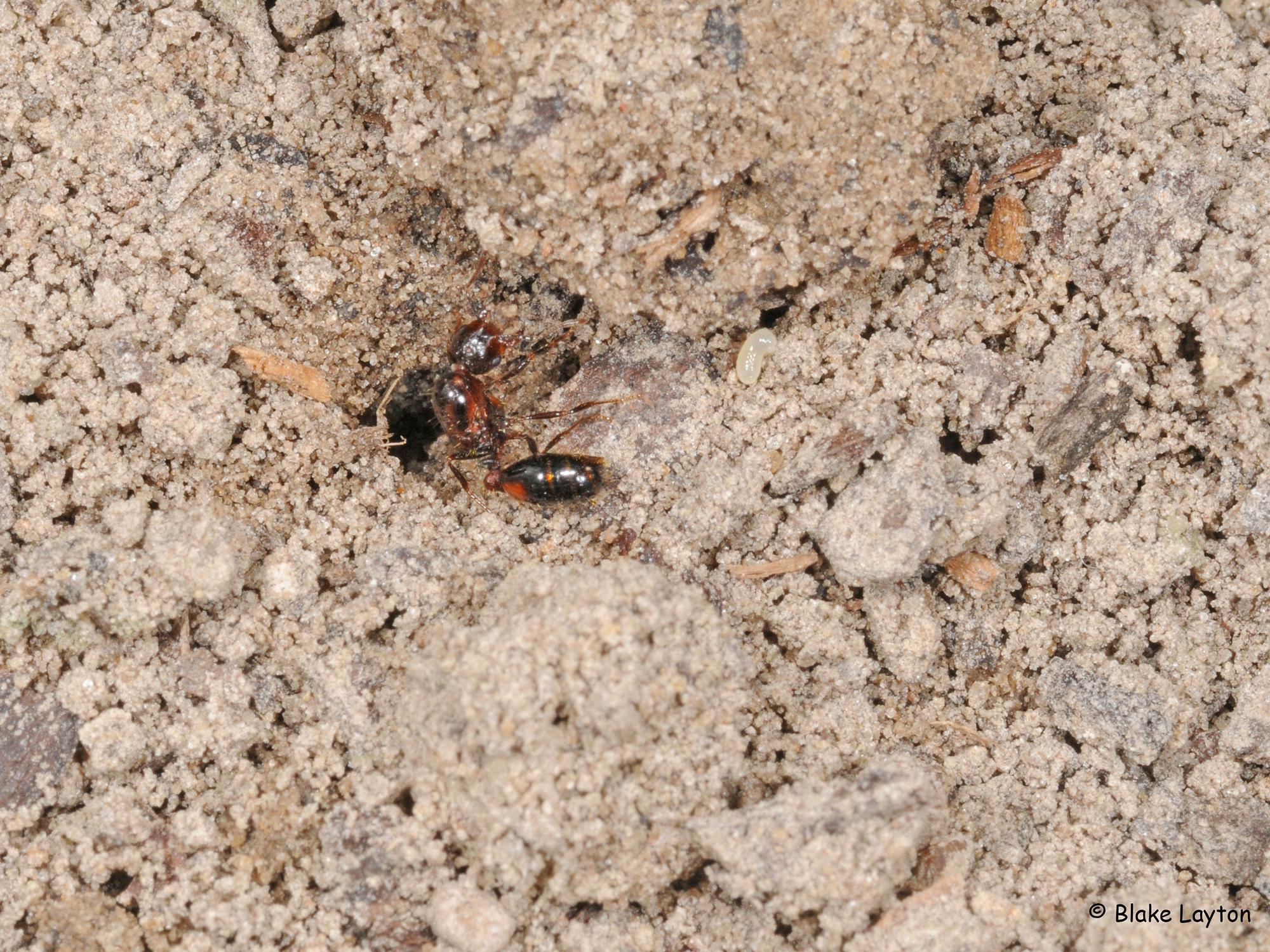Imported Fire Ant Queen, Vol. 4, No. 6
Related News
September 10, 2013
June 24, 2013
June 20, 2013
April 11, 2013

Order: Hymenoptera
Family: Formculionidae
What’s the smallest possible fire ant colony? This newly-mated queen is just beginning to excavate her nest site. She’s all alone right now, but she’s hoping to have a big family one day. Yesterday, she and hundreds of her brothers and sisters were in a large mound waiting for the workers to open exit tunnels through the top of the mound so they could swarm. She had wings then and used them to fly up into the sky, where she was intercepted by a waiting male. It was a good day for swarming and many other colonies also swarmed that day. After mating, she fell to the ground, shed her wings, and began searching for a good place to nest. It was windy that day, so she landed several miles from her parent colony.
Her next step is to dig a small nest chamber, lay a few eggs and care for the resulting larvae. She will have to get by without eating during this time, using nutrients derived from the breakdown of her flight muscles—won’t be needing those again—to provide nutrition for herself and those first few worker ants. These first workers will be small and stunted, but as soon as they are adults they will begin to forage and care for subsequent larvae, allowing the queen to focus all her effort on laying eggs. If the colony survives, and most don’t, it will be many months before it grows into a small mound that is large enough to notice, but eventually, it could grow to a population of one hundred to two hundred thousand, and produce swarmers of its own.
Control: There are three methods of controlling fire ants: 1} granular fire ant baits, which are spread over the yard two or three times a year 2} individual mound treatments, applied either as dry powders or liquid drenches, and 3} broadcast insecticide treatments that kill foraging workers and newly arrived queens as they move through the soil. See Extension Publication 2429, Control Fire Ants in Your Yard for detailed information on how to use these treatments. For best control, plan on using a combination of at least two of these methods.
Also see the MSU Fire Ant web site for detailed information on fire ant biology and information on controlling fire ants in special situations, like pastures, orchards, commercial vegetables, or home vegetable gardens.
Blake Layton, Extension Entomology Specialist, Mississippi State University Extension Service.
The information given here is for educational purposes only. Always read and follow current label directions. Specific commercial products are mentioned as examples only and reference to specific products or trade names is made with the understanding that no discrimination is intended to other products that may also be suitable and appropriately labeled.